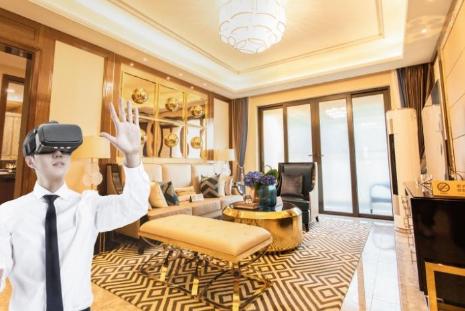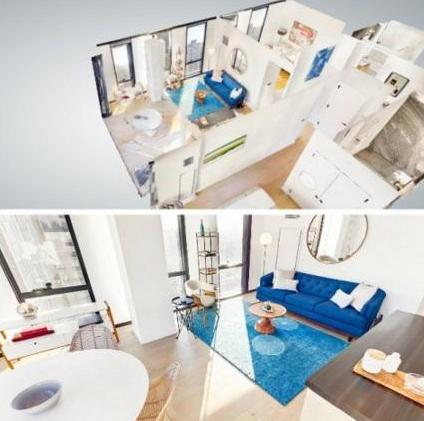At present, VR viewing technology is generally divided into two categories. First, it is necessary to wear VR glasses (such as HTC Vive) and other head-explicit VR way for VR viewing. The second is the online naked eye VR house viewing through the network terminal of computer, tablet computer, or mobile phone.
Of the two methods, the first is undoubtedly the most effective. In the WORLD of VR, it is possible to be immersive. You can completely immerse yourself in a virtual environment. Suitable for large projects. Let the client can feel the grand momentum of the whole project. But the disadvantage is the inconvenience. You need TO wear VR glasses and a computer. The price of the overall scheme of setting up the environment is relatively high. Production costs are high. If this scheme is adopted, a special person is required to explain how to use VR glasses and various matters for customers. The time and labor costs make this approach obsolete.

The second way is mainly through mobile phones and computers for naked-eye viewing. It can also be viewed in a mobile VR box. There are three ways:
The first is the earliest panoramic VR. I believe you have already experienced it on your mobile phone or elsewhere. It can be a panoramic photo or a panoramic rendering and then go to the scene on the menu. This method is convenient and simple, but the disadvantage is that the observation point is fixed. Each room depends on the location chosen by the photographer. Moreover, when the scene jumps, customers often don't know where they are and lack the sense of reconstruction of the scene. There is no global sense of logic and understanding of space. Besides, when viewing the panorama, the edges will produce strong distortion. Seriously affect the viewing effect.
The second approach is suitable for physical housing. It uses a professional scanning camera to scan and photograph the scene, and then generates a rough model for browsing. You can think of it as a sequence of path points (that is, multiple camera shots) of a panoramic image. Load the model information when the scene is switched, and feel as if you can move freely in it. It keeps the logical sense of the spatial path and helps to form the spatial concept. Its limitation at present is that the model is not accurate enough and can only be a physical room.

Another approach is for those without solid templates, but do not want to express the space through panoramic renderings. After all, panoramic renderings are a poor logical representation of space. This is done through modeling renderings using techniques such as Tree.js or other WebGL technologies. Then generate lightweight HTML files for dissemination and sharing through web pages. You can walk around the room completely and watch, and you can switch between Spaces. You can choose a floor plan or a surrounding map or go directly to each room, and then click directly to walk inside the room. This gives customers real and easy to watch experience. Connect your VR glasses and watch them in space. This is called a "3D virtual tour".











